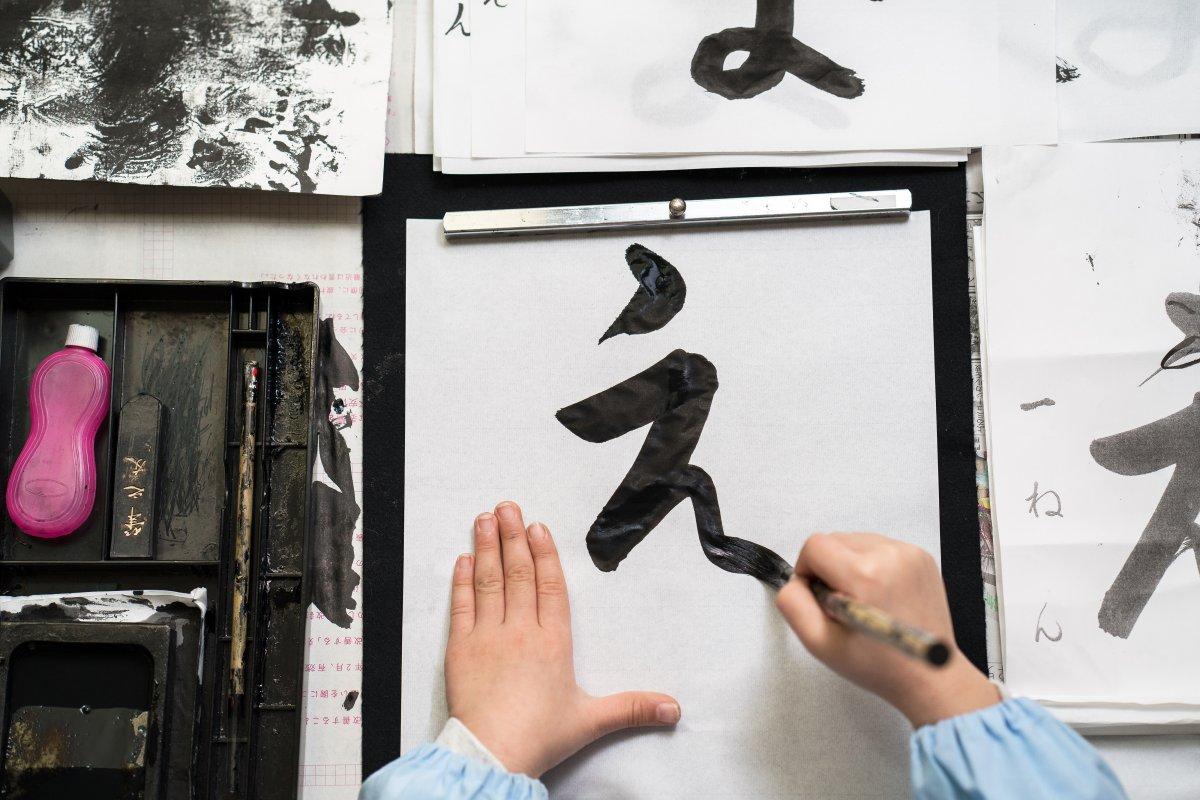When you’re studying Japanese, you will learn new vocabulary, grammar, and writing systems. Now that you’ve been introduced to hiragana , it’s time to talk about kanji. Here, Brighton, MA Japanese teacher Karou N. shares some effective study tips to help you learn kanji…
In Japan, there are three written systems: hiragana, katakana and kanji. Of these, kanji is by far the most complex.
However, it is also the most important to learn if you want to be able to read and write Japanese fluently. In this post, we’ll take a look at what kanji are, how they differ from hiragana and katakana, and some tips for learning them effectively.
By the end of this post, you should have a good understanding of what kanji are and how to learn Japanese kanji.
How Many Kanji Do You Need to Know to Be Fluent?
Becoming fluent in Kanji can be a daunting task, but it doesn’t have to be impossible:
- Generally speaking, you will need to know around 2,000 of the most common Kanji characters in order to become fluent.
- To make the process easier, it’s best to take your time and pace yourself. As you go through each new character, break them down into smaller subsets by learning radicals first and linking symbols together.
- Additionally, practice writing kanji as this will help improve your recall as well as understanding of their meaning.
- Finally, try to put what you’ve learned into context by reading Japanese books or watching Japanese television shows and movies while incorporating what you’ve learned when you come across it.
With dedication and patience, mastering Kanji will be an achievable goal that can help make your language learning dreams come true!
If you’re ready to start learning Kanji, ask your Japanese instructor for help – and be sure to sign up for Japanese lessons if you haven’t already. You’ll learn everything you need to know in order to be successful as you learn Kanji, like what you see in the video below:
https://www.youtube.com/watch?v=aqqaoqfA0nU
Should I Learn Kanji or Vocabulary First?
Deciding whether to learn Kanji or vocabulary first when studying Japanese can be a difficult task. The reality is, there is no one-size-fits-all answer; the preferred method for learning will depend on the individual student and their goals and preferences.
For example, some students might prefer tackling the harder challenge of learning characters first, while others may find it more helpful to learn basic words before jumping into Kanji.
Additionally, because language learning is incredibly complex, different methods might be needed throughout the process. Ultimately, deciding which way to go about your language studies should come down to what works best for you in terms of comprehension and retention of material.
How to Learn Kanji: A Quick Guide
If you’re interested in studying Japanese, and you’ve made up your mind to learn the language, there’s no way to avoid kanji. Understanding kanji, and being able to read and write the letters correctly, is important for anyone who wants to learn Japanese.
Kanji characters have become increasingly popular among non-Japanese speakers because of the way the symbols look. Some people get kanji tattoos or print kanji on clothing.
Many people are interested in learning kanji, but shy away from the writing system because they think it’s too complicated. Despite what you may have heard, I’m here to tell you: with a little bit of patience and persistence, you can learn kanji!
First, let’s break down some aspects of kanji which may seem confusing, and then talk about what you can do to make it easier to learn kanji.
Writing Order
Each kanji character has a specific writing order. This can get confusing, however, because some kanji have stroke order variations.
Most kanji follow a pattern. This means you can develop a sense of the writing order by learning other characters. Look at the letter 四. This character means yon or shi (four).
There are six lines in the letter 四, and the writing order goes like this:
- left vertical line
- top horizontal and right vertical in one stroke
- curved line inside left
- clunky line inside right
- bottom
This pattern applies to other kanji like 図 or 回. Both kanji have a big square with another symbol inside the square. These letters have to be written in the same pattern – left vertical, top and right vertical in one stroke, then inside materials, and finally bottom.
Stroke Order
There are a few rules that determine how to draw each line. These rules are the same in print and calligraphy, which requires a brush instead of a pen. Calligraphy rules, which were established a long time ago, still apply to print today.
When it comes to stroke order, there are three rules you need to remember:
- tomeru (to stop)
These rules don’t just apply to kanji, they are also mandatory in hiragana and katakana.
Reading Variations
Kanji can be read in many different ways. There are several different ways to say person or people: nin, jin, hito, bito, and ri. There are two types of reading in kanji which causes all these variations.
The first reading method is called on’yomi. Nin is the on’yomi term. The direct translation of onyomi is “sound reading.” Kanji was originally imported from the Han Dynasty in China, and kanji actually means the “letter of Han.” When kanji was first introduced, many Japanese people imitated Chinese pronunciations.
Kun’yomi is another way to read kanji. Unlike hiragana and katakana, kanji has a meaning for each character. When kanji was imported, Japanese people matched kanji to corresponding Japanese words. Kun’yomi can be translated as “meaning reading.” Hito is the kun’yomi for “person” in kanji.
A lot of kanji need to be followed by hiragana in kun’yomi. Most kanji have both on’yomi and kun’yomi. Other pronunciations developed because of conjugations with other words.
For example, jin is a variation of nin in on’yomi, and bito is a variation of hito in kun’yomi. Ri is only used when you are counting the number of people. To avoid being confused by so many variations, I suggest memorizing a term rather than all of the variations of pronunciations.
A Few Kanji Learning Tips
Here are some tips to help you understand kanji.
1. Start With the Basics
This applies to anything you want to learn—it’s important to start off slow and learn the basics. This can be boring and frustrating because most students want to learn and advance quickly, but you need to build a solid foundation before you can move on to more advanced concepts.
2. Complex Kanji are Combinations of Other Kanji
Understanding this idea will make learning kanji much easier, and this is another reason you need to start with the basics. Some kanji look terribly complex, but if you understand some basic characters, you will be able to recognize repeating patterns.
Kanji can be divided into two or more parts: left and right, top and bottom, left, middle, right, top, bottom, and so on. The difficult kanji are combinations of more basic kanji. This means that once you know the basics, you will no longer be intimidated by complicated kanji.
Doesn’t this make you feel much better about kanji?
3. Use Tracing Paper
When learning new kanji in elementary school, students are always given tracing sheets. This method isn’t just great for children, it’s helpful for adults, as well.
Find sample kanji letters to use as a reference. A sample also gives you instructions for writing order and stroke rules. After you understand these details, all you need to do is to repeatedly trace the characters. Once you get used to tracing the characters, try writing them on your own.
What is the Best Way to Learn Kanji?
f you’re looking to learn Kanji, the written language of Japanese, you’ve come to the right place! Learning Kanji is not always easy, especially if you are new to the language. But don’t worry—there are plenty of ways for you to learn Kanji quickly and effectively. Here are some tips.
Try a Learn Kanji Video Game
Video games have become increasingly popular among those learning how to read and write in Japanese due to their fun and interactive nature. Many video games are designed specifically for learning Japanese characters such as Kanji, making them an excellent way for beginners to learn the language quickly and easily. Plus, they make studying more enjoyable!
What is the Best App to Learn Kanji?
There are numerous apps available on both iOS and Android that can help teach you Kanji. One Kanji learning app might focus on teaching the basics while others challenge you with interactive quizzes or writing exercises that test your knowledge of the language. The best app for you will depend on your needs and preferences, so be sure to take some time and explore what’s out there before committing to one option.
Use a Kanji Learning Website
There are all kinds of websites with an extensive library of resources related to learning Japanese characters such as Kanji. These websites offer lessons, tutorials, quizzes, flashcards, and more which can help make studying easier and more effective.
Try a Learn Kanji Book
For those who prefer traditional methods of learning foreign languages, books offer an excellent resource for acquiring new skills when it comes to reading and writing in Japanese. Look for books that focus specifically on teaching beginners how to read and write in Japanese characters like Kanji as these can provide invaluable insights into mastering the language quickly.
Get a Tutor
Last but not least, getting a tutor is another great way of learning how to read and write in Japanese characters such as Kanji. Whether online or offline tutoring sessions work best for you depends on your individual needs; however, having someone who is knowledgeable about the language is always beneficial when it comes mastering any foreign language such as Japanese with its unique writing system including kanjis.
Is Kanji Hard to Learn?
Studying kanji requires time, patience, and diligence, but it’s definitely not impossible to learn. I have helped many students learn kanji using the steps that I have outlined. If you’re apprehensive about learning kanji, I’m here to let you know that you can do it!
Want to master kanji and other advanced Japanese concepts? Find a Japanese tutor today!
 Kaoru N. teaches Japanese, guitar, and classical guitar lessons in Brighton, MA. Originally from Tokyo, he graduated from Berklee College of Music with a dual major, and is available for in-home, in-studio, and online lessons. Learn more about Kaoru here!
Kaoru N. teaches Japanese, guitar, and classical guitar lessons in Brighton, MA. Originally from Tokyo, he graduated from Berklee College of Music with a dual major, and is available for in-home, in-studio, and online lessons. Learn more about Kaoru here!
Photo by Stéfan
Maile Proctor

